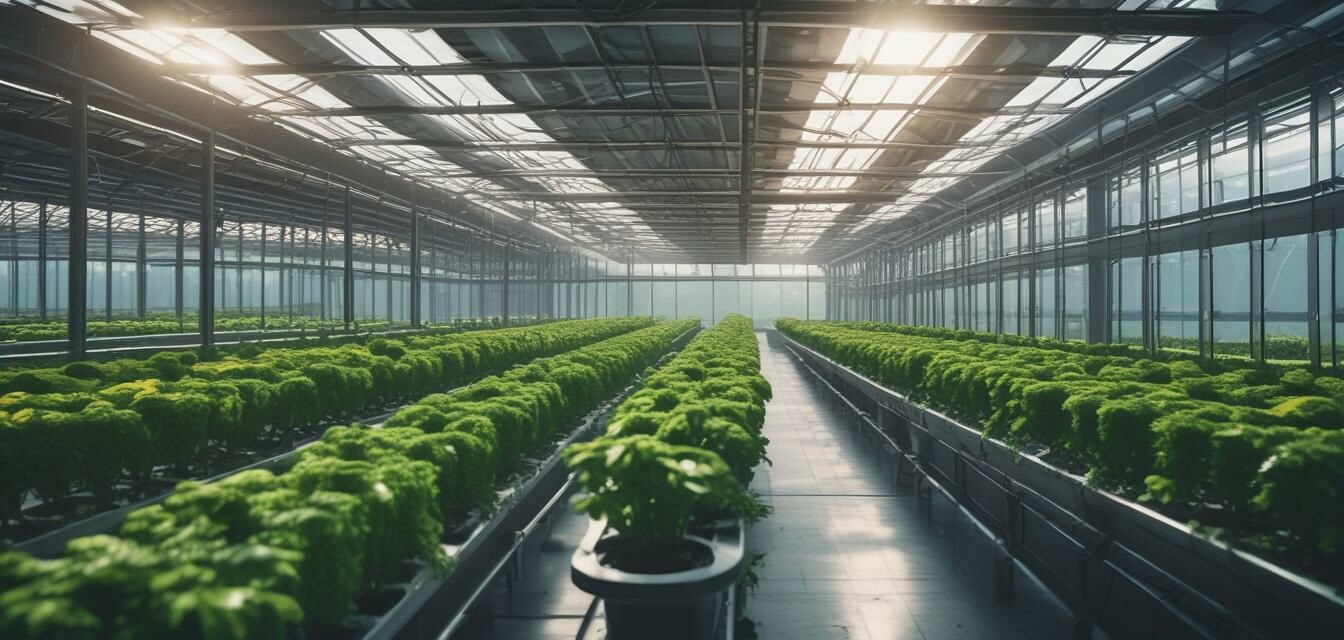
Renewable Energy Innovations for Hydroponics
Key Takeaways
- Renewable energy sources, including solar and wind, are revolutionizing hydroponic gardening.
- The integration of these technologies promotes sustainability and reduces reliance on non-renewable resources.
- Innovative systems combine nutrient delivery with energy efficiency to create advanced hydroponic setups.
- There are various financial incentives and grants available for adopting renewable technologies in agriculture.
- Choosing the right energy source can optimize the growth cycle of hydroponically grown plants.
The world of hydroponic gardening is evolving rapidly with the adoption of renewable energy sources. Not only do these innovations promote sustainability, but they also present an efficient method for food production that minimizes reliance on traditional power sources. In this article, we will explore how renewable energy technologies, particularly solar and wind, are being integrated into hydroponic systems.
Understanding Hydroponics
Before diving into renewable energy innovations, it's essential to understand what hydroponics is. Hydroponics is a method of growing plants without soil, using nutrient-rich water solutions. This soil-less approach allows for effective water use and is ideal for urban areas and regions with poor soil quality. The growth rates and yields are often superior compared to traditional gardening methods, making it a favored choice among urban gardeners and commercial growers alike.
The Need for Renewable Energy in Hydroponics
With climate change and environmental sustainability becoming prime concerns, the shift towards renewable energy sources is more crucial than ever. Traditional hydroponic systems often rely on high energy consumption for their lighting and nutrient delivery systems. By integrating renewable energy sources, we can further enhance the sustainability of hydroponics.
Innovative Renewable Energy Solutions
1. Solar Energy
| Advantages of Solar Energy | Considerations |
|---|---|
| Low operating costs after initial setup. | Initial investment can be high. |
| Scalable for small to large systems. | Energy production varies with weather conditions. |
| Can be integrated into existing greenhouse systems. | Requires space for panel installation. |
Implementing solar panels can significantly lower energy costs in hydroponic operations. By harnessing sunlight, systems can power grow lights, pumps, and sensors, leading to more energy-efficient growing practices.
2. Wind Energy
| Benefits of Wind Energy | Challenges |
|---|---|
| Provides a renewable solution to energy needs. | Requires suitable geographic conditions. |
| Potentially reduces overall energy costs. | Noise and aesthetic concerns for nearby residents. |
| Can work well in tandem with solar energy. | Installation costs can be significant. |
Wind turbines can supplement the energy needs of hydroponic systems, especially in regions with consistent wind patterns. By combining wind energy with solar power, hydroponic farms can achieve a more stable and reliable energy supply.
Combining Renewable Energy with Hydroponic Systems
The integration of renewable energy technology into hydroponic systems not only helps in sustainability but also leads to innovations in nutrient delivery and automation. Here are a few combined approaches:
- Solar-Powered Grow Lights: These lights can help reduce energy consumption while ensuring adequate light for plant growth.
- Automated Nutrient Solutions: Powered by renewable energy, these systems can deliver precise nutrient amounts to the plants as needed.
- Climate Control Systems: Regulating temperature and humidity using renewable energy creates an optimal growing environment.
Financial Incentives for Implementing Renewable Energy
There are many financial incentives available for adopting renewable energy systems in agriculture. Programs may include grants, tax credits, and low-interest loans. Governments often promote these initiatives to encourage sustainable farming practices, making it easier for growers to invest in innovative technologies.
Future Trends in Renewable Energy and Hydroponics
The future looks promising for the integration of renewable energy in hydroponic gardening. Continuous advancements in technology will make it easier and more affordable to harness these energy sources. Some potential future trends include:
- Increased efficiency in solar panel technology, leading to higher energy outputs.
- Wider adoption of energy storage systems to manage energy use effectively.
- Enhanced automation in hydroponic systems powered by renewable energy.
- Greater collaboration between tech companies and farmers to develop tailored solutions.
Summary
The shift towards renewable energy in hydroponics represents a crucial step forward in creating sustainable food production methods. As the technology continues to develop and become more accessible, it will lead to innovations that further reduce environmental impacts while increasing efficiency.
Pros
- Reduces carbon footprint and reliance on fossil fuels.
- Can lead to cost savings in energy bills over time.
- Encourages sustainable farming practices and food production.
Cons
- High upfront costs for setup and installation.
- Dependence on weather conditions for energy generation.
- Space requirements for installation of energy systems.
Explore More
If you're interested in diving deeper into hydroponic gardening, take a look at some of our related articles:

